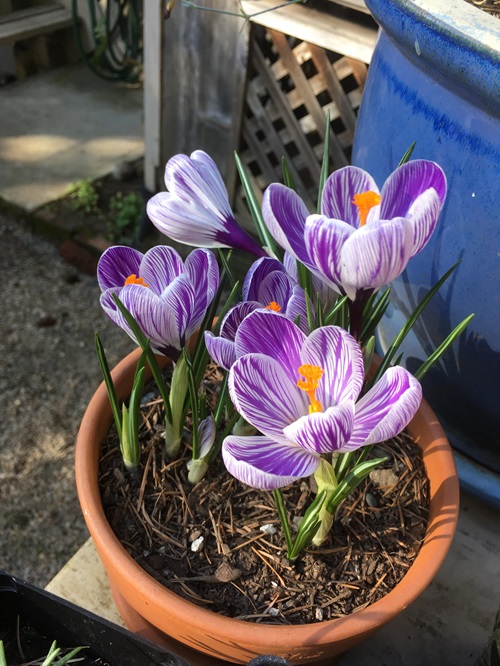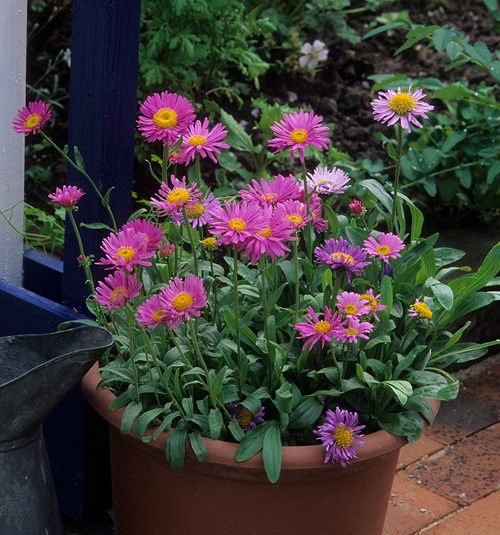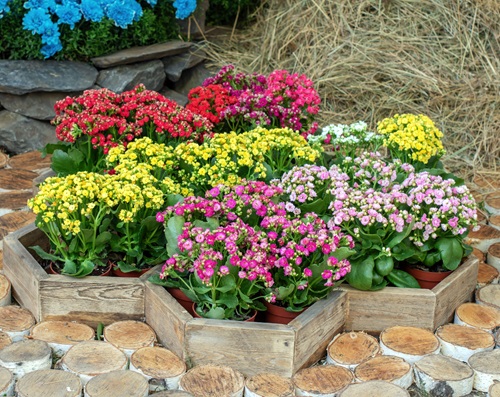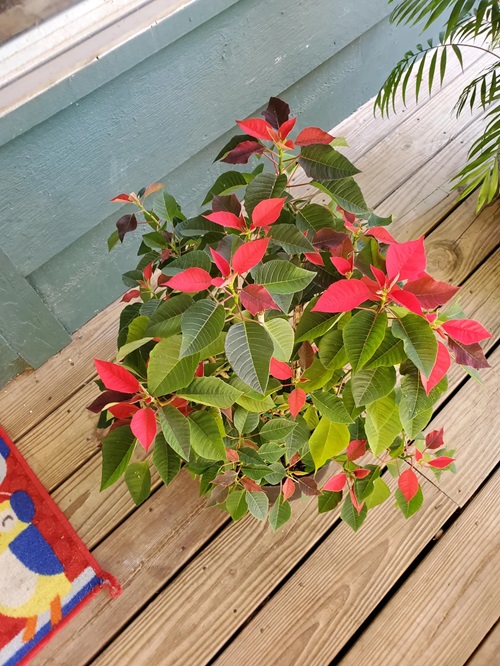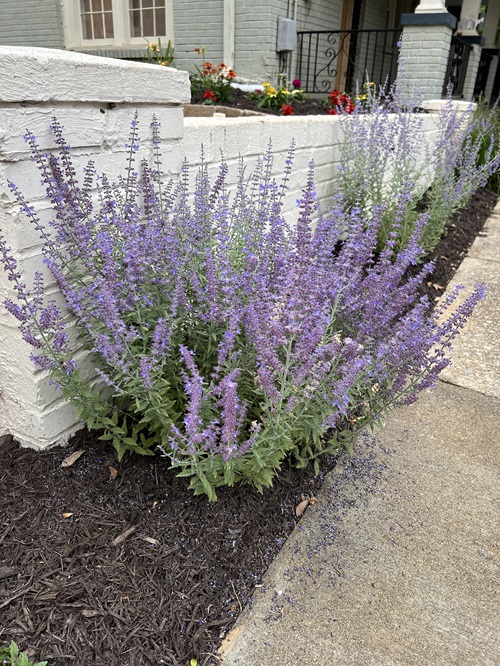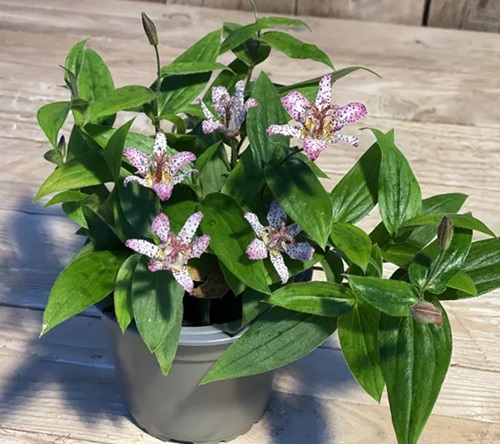Fall’s here—it’s time to give your garden a seasonal makeover. Plant these Flowers that Bloom in the short days and long nights of Autumn!
Most flowers begin packing up and head for hibernation and dormancy as we enter mid to late fall. But not these ones on our cool-season garden specials! Plant these flowers that bloom in autumn’s short days even as others abandon.
Flowers that Bloom in the Short Days of Autumn
1. Mum

Botanical Name: Chrysanthemum x morifolium
USDA Zones: 5–10
Blooming from late summer to fall, autumn mums are fast-growing perennials with stunning gold, purple, white, and copper flowers. They grow actively in late spring to summer but only treat you with blooms in the fall.
Chrysanthemums flourish in morning sunshine, prefer a bit of afternoon shade, and need well-drained soil. You can also check out other mum varieties that bloom in autumn, as most are short-day plants.
Tip: Cut back at least three times during spring to make them bushy and get more fall blooms.
2. Autumn Crocus
Botanical Name: Colchicum autumnale
USDA Zones: 4–9
Autumn crocus is another perennial herb that flowers through autumn until the first frost. Its large lavender, pink, or white blooms are often confused with common crocuses. However, unlike the latter, this plant contains alkaloid colchicine and is poisonous.
Plant it in rich, well-drained, loamy soil and provide ample sunshine.
3. Aster
Botanical Name: Aster
USDA Zones: 3–9
Asters are not just a single plant but a genus of over 250 species! Don’t worry; most of them share the characteristic of blooming in the fall. You can spot their small, daisy-like, colorful flowers throughout Europe, Asia, and North America.
They are a gardener’s dream as they are easy to maintain, don’t need deadheading, and flourish in full sun and moist, well-draining soil.
4. Goldenrod
Botanical Name: Solidago
USDA Zones: 3-8
If your garden needs some sunny cheer, solidago’s bright golden blooms are the perfect game-changer. The plant is also medicinal, with bottle-brush-like racemes of tiny saucer-shaped flowers. The botanical name solidago translates to “make whole!”
These short-day drought-tolerant plants grow fuss-free and thrive in various soils, including poor, dry, and clay. However, they have a soft spot for full sun and in average soil.
5. Kalanchoe
Botanical Name: Kalanchoe spp.
USDA Zones: 9-12
Kalanchoes are succulents with thick, fleshy, scalloped leaves that store water. The real highlight of kalanchoes is their varied flower clusters that emerge at the end of tall stalks. The blooms can be red, pink, yellow, orange, or white and last several weeks.
These short-day plants also bloom in the fall, triggered by the long periods of darkness.
6. Holiday Cactus
Botanical Name: Schlumbergera spp.
USDA Zones: 9-12
Schlumbergera is a popular holiday season houseplant genus that sports fleshy, segmented stems that cascade down and fill out the pot’s periphery.
Plant it at the right time, and by the winter holidays, your Thanksgiving or Christmas cactus will push out bright pink blooms!
Fun Fact: One key difference between Thanksgiving and Christmas Cactus is the shape of its segments—the former has sharper edges, and the latter has rounded, scalloped edges.
Reduced light during autumn signals the plant to form buds. And a few weeks into this dark-light cycle, flowers will begin to blossom.
7. Poinsettia
Botanical Name: Euphorbia pulcherrima
USDA Zones: 9-11
Poinsettias are known for their bright, colorful bracts, often mistaken for flowers. These red bracts are modified, variegated leaves, but they can also be pink or white. Its flowers are small, yellow clusters that appear at the center of the bracts.
These plants prefer bright, indirect sunlight during the day. They are sensitive to cold drafts, so make sure you keep them in a warm area.
8. Sneezeweed
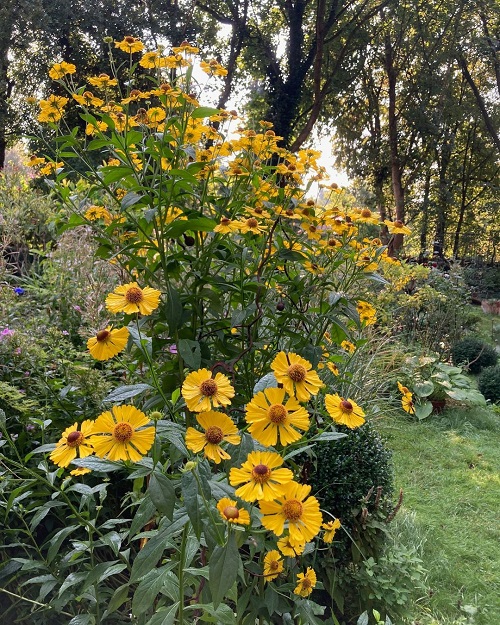
Botanical Name: Helenium autumnale
USDA Zones: 3–9
Sneezeweed or autumn sneezeweed are sunflower imitators—the only difference is that these beauties flower during the fall season! The flowers are often yellow or orange but sometimes lean towards red, with a distinct raised center.
Used to make snuff that caused sneezing, the plant is toxic in large quantities—don’t try it at home! It prefers full sun and average to rich, moist soil.
9. Japanese Anemone
Botanical Name: Anemone hupehensis
USDA Zones: 4–9
Japanese anemones are hybrid windflowers genetically modified to bloom in fall. They are among the top picks for fall gardens because their long-lasting, overlapping petalled blooms appear just as many others begin fading.
With showy blooms in white and pink, they thrive in constant moisture and well-drained and fertile soils, but never wet feet!
10. Showy Stonecrop
Botanical Name: Hylotelephium spectabile
USDA Zones: 3-10
The showy stonecrop is a perennial succulent with a clumping growth habit. From late summer through fall, it produces large, clustered pink and red blooms. The plant thrives in poor, saline soil and is also drought-tolerant.
Tip: Prune and pinch back the growth during summer for a longer, extended blooming season!
11. Russian Sage
Botanical Name: Salvia yangii
USDA Zones: 4–9
Want color and fragrance in your fall garden? Russian sage is the plant for the job! This woody shrub has sturdy, stiff stems covered with silvery aromatic foliage and lavender blooms in autumn.
The plant loves the sun, as it boosts its aroma and stability. It is easy to maintain and ideal for hot, arid regions.
12. Toad Lily
Botanical Name: Tricyrtis hirta
USDA Zones: 4–8
Pick toad lilies in your garden during autumn for quirky, alien-like blooms. Their small, spotted blooms are topped with swollen, sac-like nectaries and hairy stems and leaves. Native to Japan, they thrive in partial to full shade and moist, slightly acidic, organic-rich soil.
13. Montauk Daisy
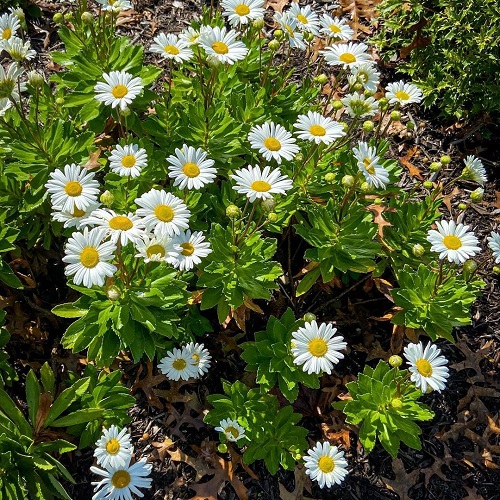
Botanical Name: Nipponanthemum nipponicum
USDA Zones: 5–9
Montauk daisies are perennials that bloom on short autumn days and beautify the garden with pretty white flowers. The yellow center contrasts the large blooms, which grow on sturdy, dark green stems.
They grow vigorously in well-drained soil and full sun but tolerate partial shade and some salinity.


